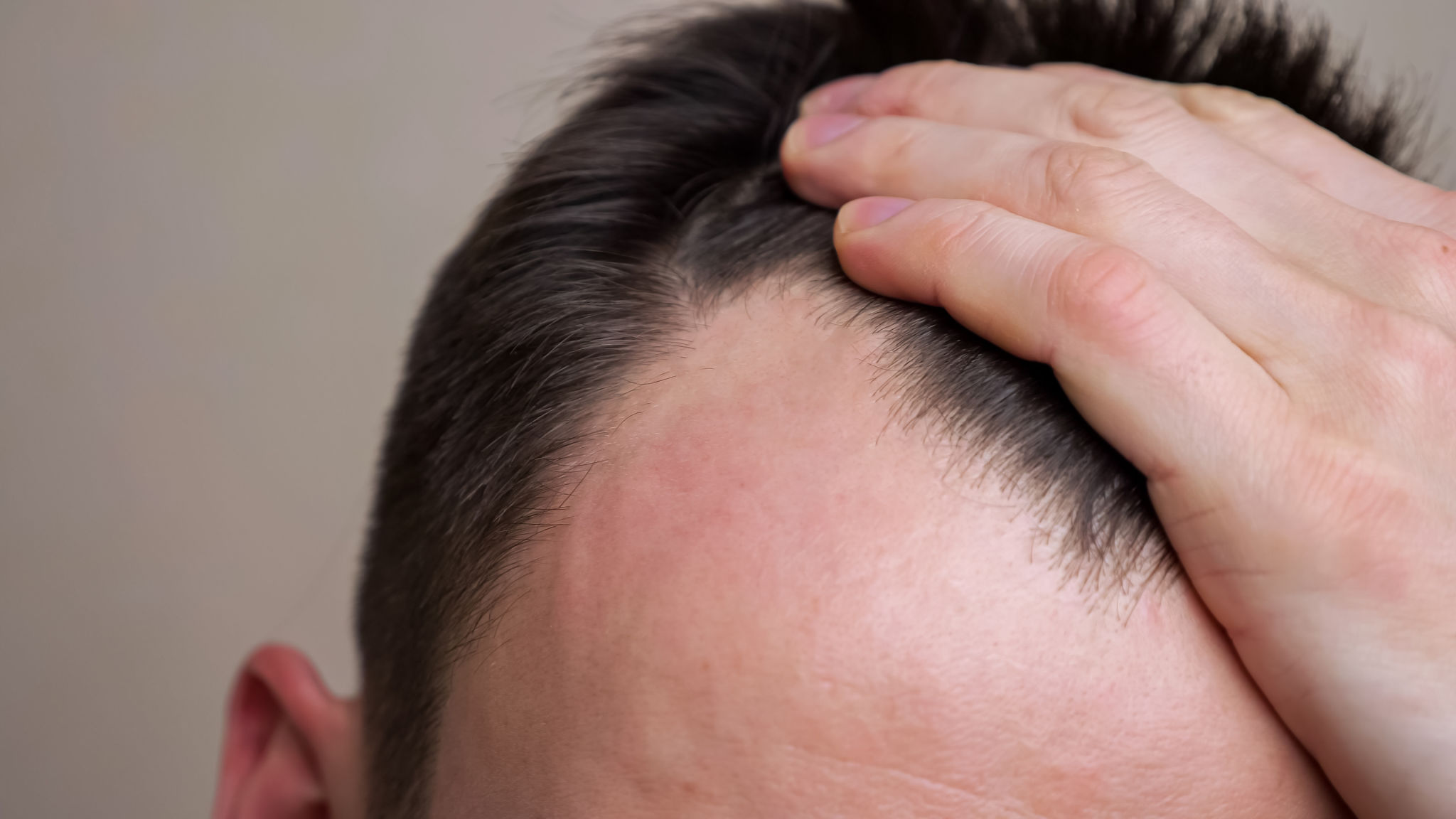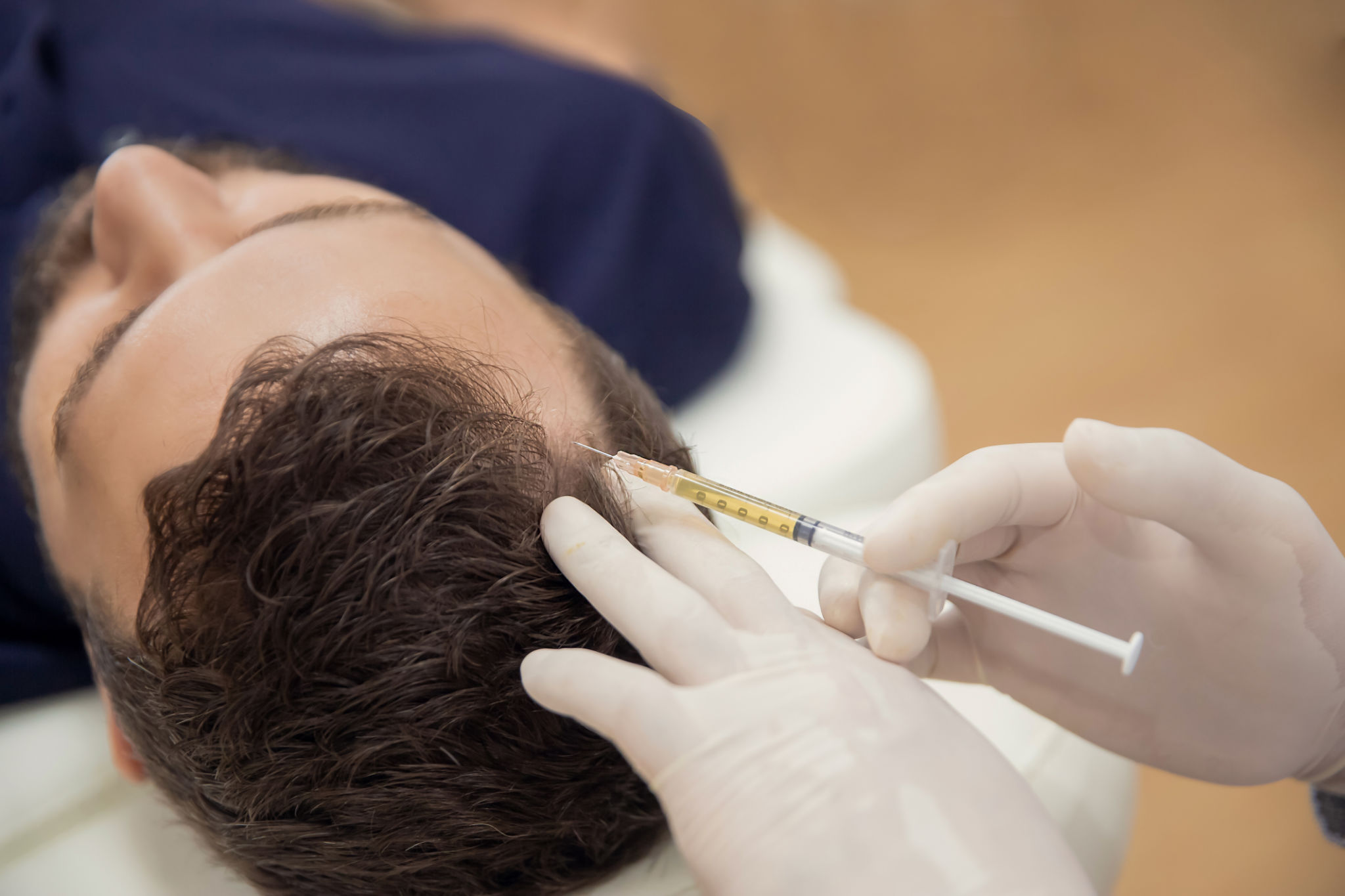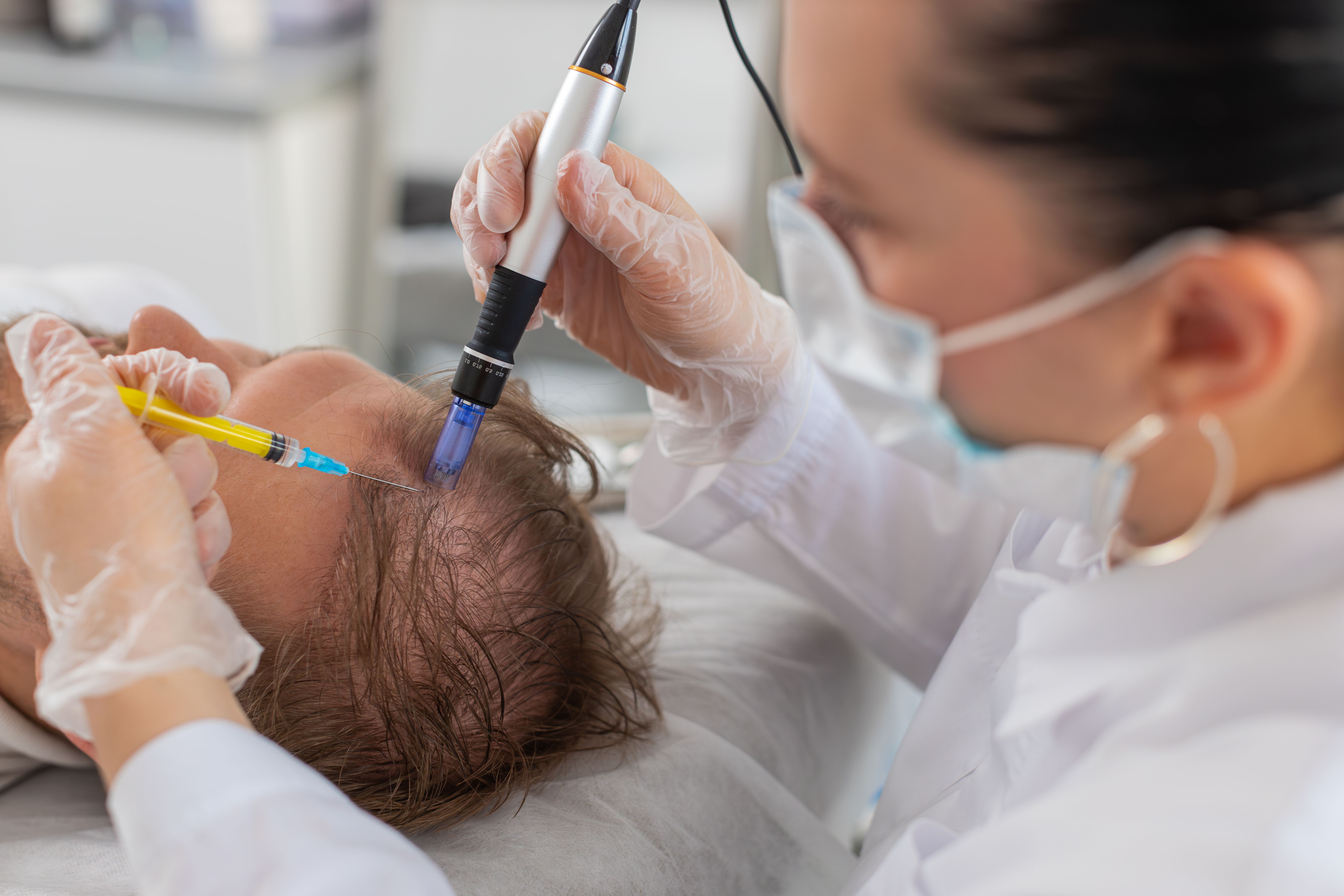Exploring Scalp Tension Theory: The Role of PRP and Microneedling in Hair Loss Treatment
Understanding Scalp Tension Theory
Hair loss is a multifactorial issue, with genetics, hormones, inflammation, and circulation all playing a role. One emerging concept that's gained attention in recent years is the Scalp Tension Theory of hair loss. This theory sheds new light on why certain areas of the scalp are more prone to thinning and more importantly, it suggests new therapeutic angles. Among the most promising are PRP (Platelet-Rich Plasma) therapy and microneedling.

What Is the Scalp Tension Theory?
The Scalp Tension Theory was first proposed by researcher Dr. Tom Hagerty. According to the theory, chronic tension in the scalp muscles and fascia (connective tissue) contributes to the gradual miniaturization of hair follicles seen in androgenetic alopecia (pattern hair loss).
Here’s how it works:
The scalp has a fibrous structure called the galea aponeurotica, which connects muscles of the forehead and back of the head.
Over time, sustained tension in these muscles leads to reduced blood flow, increased inflammation, and even mechanical pressure on hair follicles.
This chronic tension can trigger or worsen the effects of DHT (dihydrotestosterone) in susceptible individuals, speeding up follicle shrinkage and shortening the growth phase (anagen) of the hair cycle.
Key signs this may apply to you: tight-feeling scalp, visible scalp immobility in thinning areas, or habitual tension in the forehead, temples, or neck.
How PRP Therapy Can Help
PRP therapy involves injecting a concentrated form of your own blood platelets into the scalp. These platelets are rich in growth factors that stimulate healing, tissue regeneration, and follicle activity.
In the context of scalp tension:
PRP promotes angiogenesis (formation of new blood vessels), which counteracts the reduced blood flow caused by chronic muscle tension.
It reduces local inflammation, which is often elevated in areas of mechanical stress.
It can prolong the anagen (growth) phase of hair follicles and revitalize dormant follicles.
Multiple studies show that PRP improves hair thickness, density, and overall hair quality especially when used regularly over a 3- to 6-month protocol.

How Microneedling Supports the Process
Microneedling involves the use of a dermaroller or pen-like device with tiny needles to create controlled micro-injuries in the scalp.
In relation to scalp tension and hair loss:
It stimulates wound-healing cascades that result in the release of vascular endothelial growth factor (VEGF) and platelet-derived growth factor (PDGF)—both crucial for hair follicle health.
It breaks up fibrosis and adhesions in the scalp tissue, potentially releasing some of the physical tension.
It increases collagen remodeling and can restore elasticity and flexibility to the scalp fascia.
Microneedling also improves the absorption of topical agents like minoxidil or peptides and can significantly amplify the effects of PRP when the two are combined in a clinical setting.
Why PRP and Microneedling Work Well Together
PRP and microneedling can be viewed as synergistic treatments. When performed together:
Microneedling acts as a “primer” by opening microchannels and triggering an inflammatory response.
PRP then delivers a targeted boost of growth factors, accelerating healing and follicle stimulation.
This combination is especially powerful for individuals experiencing early to moderate pattern hair loss particularly when stress, scalp tightness, or poor circulation may be contributing factors.

Practical Tips for Patients
Consistency matters: PRP is typically administered in monthly sessions for 3–6 months, then maintained quarterly.
Microneedling at home: If using a dermaroller at home (0.5 mm or less), aim for 1–2 times per week. Clinical microneedling (1.5 mm+) should be done by a professional.
Monitor tension: Simple scalp massage, myofascial release techniques, and posture correction can help reduce chronic scalp tension.
Support internally: Combine with a healthy diet rich in protein, iron, zinc, and anti-inflammatory nutrients.
Final Thoughts
The Scalp Tension Theory offers a fresh perspective on why hair loss occurs where it does and suggests that addressing underlying mechanical and circulatory factors may yield better outcomes than focusing on hormones alone. PRP therapy and microneedling are two tools that can help restore balance to the scalp environment, making it more conducive to healthy hair growth.
If you're experiencing early signs of hair thinning or a tight, unyielding scalp, consider consulting a qualified provider to explore these therapies. When applied correctly, they can help break the cycle of follicle miniaturization and restore your confidence one strand at a time.
